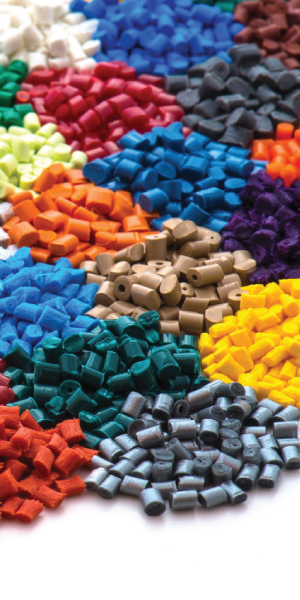
Most Common Thermoplastics Used in Injection Molding
Thermoplastic injection molding is the most well-known approach to make parts. Thermoplastics are polymers that can be heated to a liquid repeatedly or relaxed by warming and set by cooling—as a physical change as opposed to a chemical change that happens amid the formation of thermoset materials. It is imperative to recognize what sort of thermoplastic ought to be utilized for the kind of item you need to make. The following are the most widely recognized thermoplastics utilized as a part of injection molding.

Acrylonitrile Butadiene Styrene
Acrylonitrile Butadiene Styrene (ABS), it is a dark thermoplastic and amorphous polymer. It is a terpolymer (copolymer comprising of three unmistakable monomers) of Acrylonitrile, Butadiene, and Styrene. Together they make an item that is adaptable and light in weight that can be shaped into numerous things that we use in our regular day to day existences.
The benefit of ABS is that an assortment of changes can be had to enhance impact protection, sturdiness, and heat protection. Molding at a high temperature enhances the gleam and heat protection of the item while molding at a low temperature is where the highest impact resistance and strength are obtained.
Polyethylene
Polyethylene is a thermoplastic polymer with variable crystalline structure and a huge scope of uses relying upon the type. It is a standout amongst the most adaptable and most famous plastics on the planet since the 1950s when it was produced by German and Italian researchers. The two most regular kinds of this plastic are high-thickness polyethylene (HDPE) and low-thickness polyethylene (LDPE).
The upsides of polyethylene are abnormal amounts of pliability, rigidity, impact protection, protection from dampness, and recyclability. The higher the thickness of the polyethylene material utilized the more grounded, more unbending, and more heat safe the plastic is. The essential employments of polyethylene are plastic sacks, plastic films, compartments including bottles, and geomembranes.
Polyamide (Nylon)
Nylon material is utilized as a part of a vast scope of various applications in view of its electrical properties, sturdiness, wear protection and chemical protection being very noteworthy. Nylon has an abnormal state of strength and is impervious to numerous outer components like scratches, impact, and chemicals. This material produces plastic parts utilized as a part of numerous businesses, for example,
- Medicinal items
- Car items
- Games hardware
- Attire and footwear
- Industrial components
High Impact Polystyrene
High Impact Polystyrene (HIPS) is a prevalent and intense plastic that is in the Polystyrene family. Polystyrene is weak and can be more impact safe if joined with different materials. It is made from modifying crystal styrene with rubber which helps to give it many levels of impact resistance. It is low cost, has good dimensional stability and rigidity. There are FDA grades available since it is non-toxic and used as containers for many food goods.
It is exceptionally flammable, yet there are fire resistant and polished evaluations that are generally utilized for injection molding.
Polypropylene
This is an extremely regular plastic that is known for its adaptability. PP (polypropylene) is an exceptionally unique plastic and has been intensified for an extensive variety of properties. A few attributes of this plastic are its high liquefying point, high protection toward stress and splitting, magnificent impact quality, and does not break down from responses with water, acids, and cleansers.
PP is ok for use as food holders since it doesn’t filter chemicals into nourishment items. It can be generally found in family unit merchandise, for example, utensils, athletic clothing, area rugs, and car parts, for example, auto batteries.
Picking the correct material for your application can bring about expanded performance and decreased cost. At Quality Mold Shop, we comprehend that there is no “one size fits all” arrangement with regards to injection molded parts. If you have any inquiries or worries on what kind of plastic you ought to utilize, contact our group of specialists who can help you at all times.
Learn the benifits of replacing metals with plastics. Looking for a plastic molder?